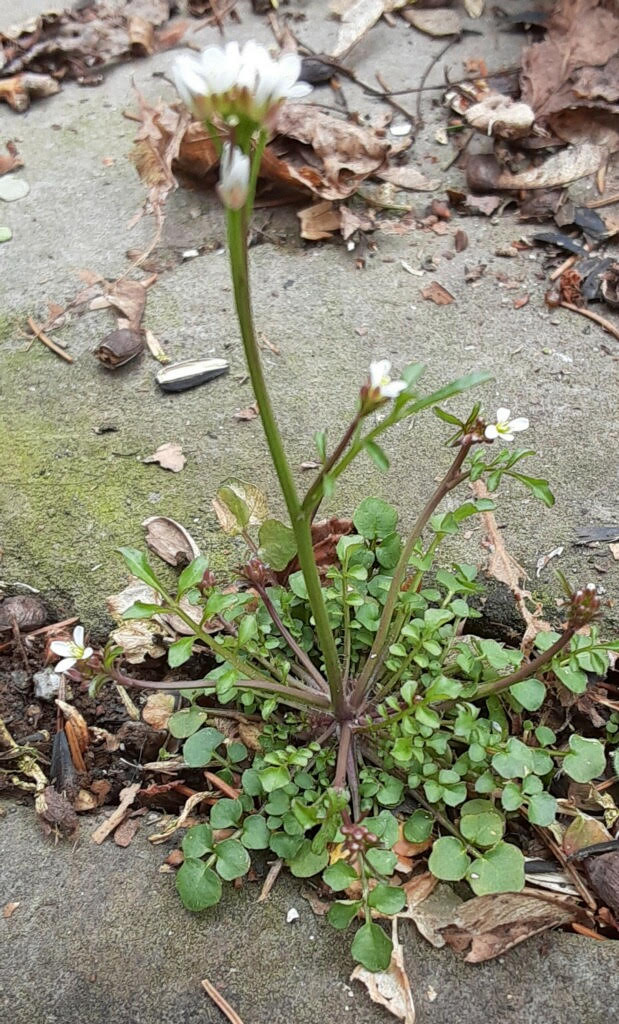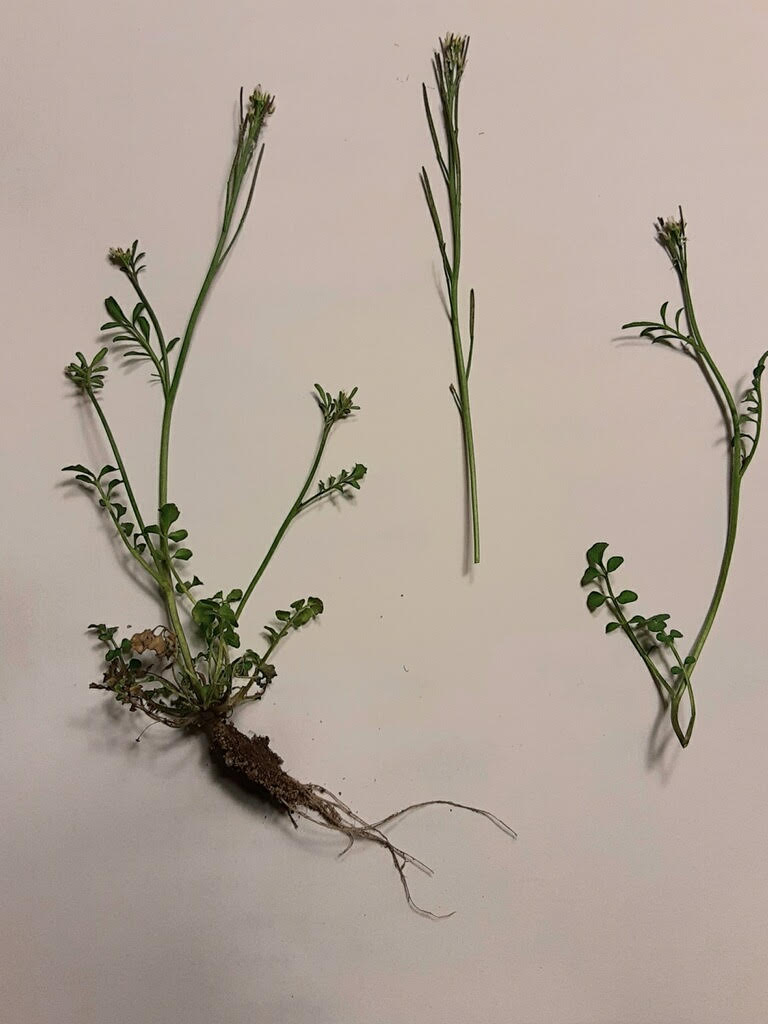By Susan Sprout
Hairy bittercress, or Cardamine hirsuta, is flowering right now! Look for them along sidewalks and in lawn edges near shrubs and trees. Depending on the weather and growing conditions, they can be either an annual or a biennial, and may complete two generations in one year. The plants I have been monitoring stayed green and photosynthesizing all winter long, and only had a couple dead leaves showing down under their rosettes of new compound leaves. Growing from seeds that germinated in the fall really gave them a head start flowering in the spring. That’s why there are so many of their tiny, white flowers coming up in my lawn.

Thirteen different species of Cardamine have been found growing in Pennsylvania. Some are native. This one was introduced from Eurasia. They are all members of the Mustard Family, and all have four-petaled flowers shaped like a cross. The family’s name used to be Cruciferae for that reason. In the early 20th century, it was officially changed to Brassicaceae, based on the Latin word for cabbage. I have seen both names being used. Whatever the name, we love to eat them – cabbage, broccoli, cauliflower, kale, mustard greens and the condiment created from their seeds, Brussels sprouts, turnips…maybe not. Don’t be put off by the word “bitter” in Hairy bittercress’s name. There is a sharp taste, but it is not really bitter. In fact, its Germanic root word “cresso” means sharp and spicy. About the “hairy” part of its name – there are very few white hairs on the leaves growing up the flower stem. I had to use a magnifier in order to confirm their existence. This plant makes an excellent addition to a lettuce salad, sharp and not hairy.

Another interesting thing I learned about Hairy bittercress is how it seeds. After pollination, the individual flowers will expand upward in thin toothpick- size seed capsules called “siliques”. When they are mature, the seed capsules will open from the bottom upward and forcefully eject their seeds, flinging them out and away from the parent plant. This maneuver is called ballochory. A new word for me. It comes from Greek “ballein” (to throw) and is also part of an old word I know – ballistics.


